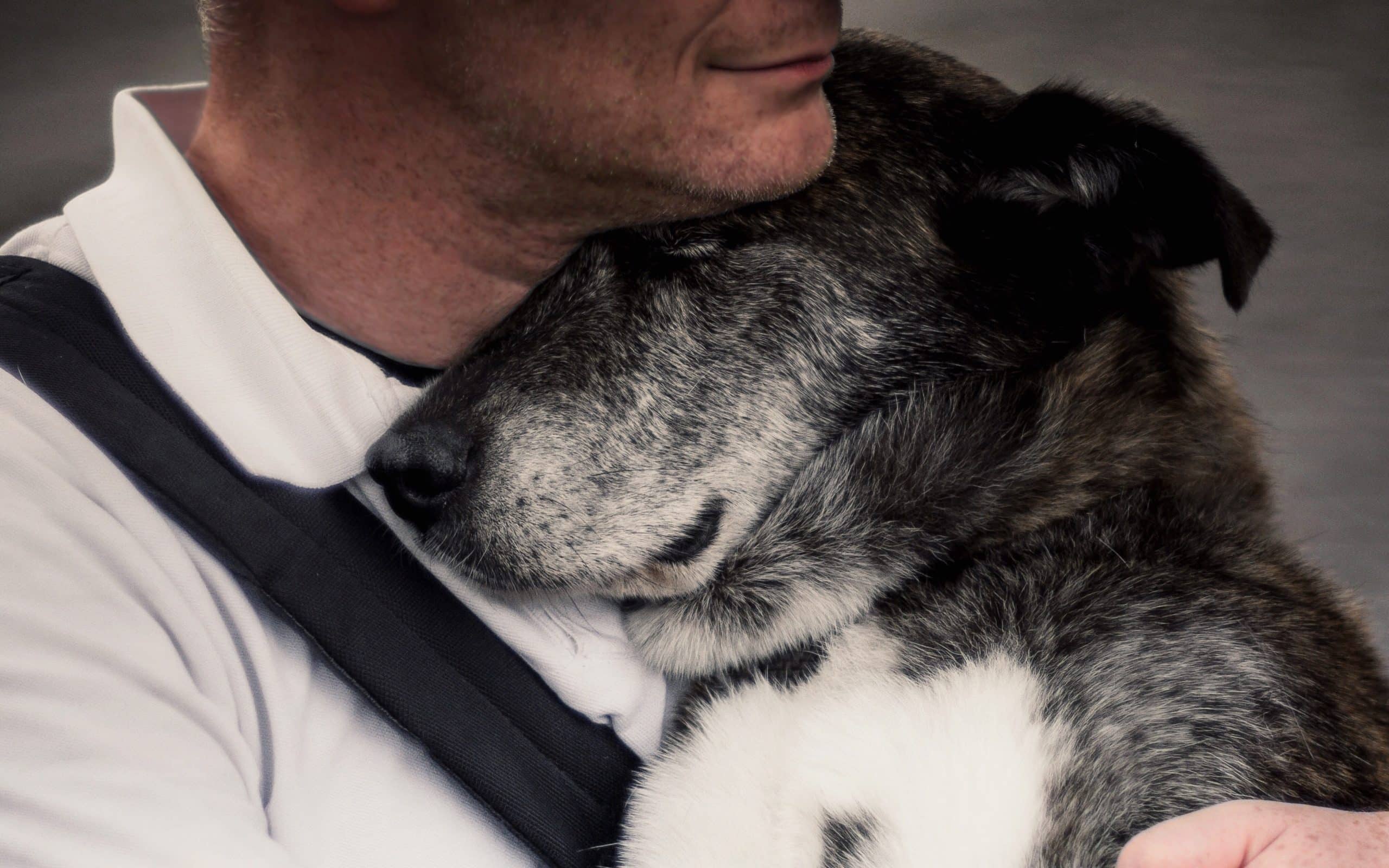Canine cognitive decline: 5 early warning signs every owner should know

Anúncios
Knowing canine cognitive decline early is crucial for maintaining a senior dog’s quality of life, as timely intervention can significantly help manage symptoms and slow age-related cognitive changes.
As our beloved canine companions age, just like humans, they can experience changes in cognitive function.
Recognizing canine cognitive decline is vital for providing them with the best possible care, ensuring their comfort, and maintaining their quality of life as they enter their golden years.
Anúncios
Understanding Canine Cognitive Dysfunction (CCD)
Canine cognitive decline is often described as the canine equivalent of Alzheimer’s disease in humans. It affects memory, learning, and comprehension, leading to behavioral changes that can confuse owners.
The term Canine Cognitive Dysfunction (CCD) is commonly used, but specialists emphasize that canine cognitive decline is a progressive neurodegenerative process.
The condition arises from age-related changes in the brain, including abnormal protein deposits, neuronal loss, and reduced blood flow.
Anúncios
These impairments make it difficult for the brain to process information, resulting in canine cognitive decline over time.
While aging is natural, the onset and severity of canine cognitive decline vary. Some dogs show mild signs late in life, while others experience symptoms much earlier.
Early recognition is crucial, as interventions can improve the pet’s comfort and delay progression.
The prevalence of CCD in senior dogs
Studies show that canine cognitive decline is far more common than many owners realize. About 28% of dogs aged 11–12 show signs, and nearly 68% of those aged 15–16 are affected.
These numbers highlight the urgent need for awareness. Despite this, canine cognitive decline is often mistaken for “just old age.”
Many owners delay seeking veterinary help, missing the chance to improve their dog’s quality of life. Recognizing that canine cognitive decline impacts well-being and relationships is vital.
Every dog ages differently. Some remain sharp, while others show rapid decline. Knowing the prevalence of canine cognitive decline empowers owners to prepare, observe carefully, and consult their veterinarian early.

Disorientation and confusion (the “where am I?” moment)
One of the first signs of canine cognitive decline is disorientation. Dogs may appear lost in familiar surroundings, get stuck in corners, or stare blankly at walls. These behaviors indicate a breakdown in cognitive mapping.
Owners often notice their dog pacing at night or struggling to find the right door. This confusion worsens in low light, a phenomenon similar to sundowning in humans.
Such symptoms reflect how canine cognitive decline disrupts daily life. Providing structure and reducing environmental changes helps ease distress.
Documenting behaviors allows veterinarians to confirm whether canine cognitive decline is the cause and suggest supportive strategies.
Changes in social interaction (less connected)
Another warning sign of canine cognitive decline is reduced interest in social interaction. Dogs may withdraw from family, ignore visitors, or show irritability toward other pets.
What looks like aloofness is often canine cognitive decline altering social processing. A once playful dog might no longer respond to cuddles or greetings.
Others may swing the opposite way, becoming clingier due to confusion. Both extremes reflect neurological changes tied to canine cognitive decline.
Owners must remember these shifts are medical, not emotional rejection. Veterinary advice can provide ways to ease anxiety and rebuild connection, even as canine cognitive decline progresses.
Changes in sleep patterns (day/night reversal)
A disrupted sleep cycle is a hallmark of canine cognitive decline. Dogs sleep excessively during the day but pace or whine at night. This day/night reversal strains both pets and owners.
The restlessness, often linked to anxiety, reflects circadian rhythm disruption. Many owners report their dog wandering aimlessly at night, another sign of canine cognitive decline.
Structured routines, increased daytime activity, and veterinary-approved medications may help restore balance.
Recognizing sleep disruption as part of canine cognitive decline prevents frustration and encourages patient care.
House-soiling and loss of trainability (regression)
House-training regression is another indicator of canine cognitive decline. Dogs may forget elimination habits, urinate indoors, or ignore previously learned commands. These behaviors are cognitive, not defiant.
Owners often feel discouraged, but understanding that canine cognitive decline impacts memory and inhibition reframes the situation. Simple adjustments, frequent potty breaks, or pads indoors can help.
As canine cognitive decline advances, even familiar cues may be lost. Compassion and patience become essential tools for managing these challenges.
Changes in activity levels (aimless pacing or lethargy)
Dogs with canine cognitive decline may alternate between compulsive pacing and lethargy. Unlike physical illness, this activity shift stems from neurological impairment.
Some dogs circle endlessly or lick repetitively, while others sleep for hours, uninterested in play. These patterns reflect how canine cognitive decline disrupts motivation and engagement.
Veterinary checks are vital to rule out other causes. When no physical issues are found, canine cognitive decline should be considered.
Adapting care routines helps keep the dog safe, stimulated, and comfortable.
When to consult your veterinarian
Recognizing canine cognitive decline is only the beginning. Consulting a veterinarian ensures other conditions aren’t overlooked. Many illnesses mimic canine cognitive decline, making professional assessment essential.
If confirmed, management strategies such as diet changes, supplements, and medications can slow progression.
Owners who act early give their pets the best chance at comfort despite canine cognitive decline. Veterinary guidance helps tailor care to each dog’s needs.
By addressing canine cognitive decline with proactive strategies, owners preserve not only their dog’s quality of life but also the special bond they share.

The diagnostic process and treatment options
The evaluation begins with a detailed history and, if possible, a behavioral diary kept by the owner.
Recording frequency, timing, and context of changes helps the veterinarian distinguish medical problems from cognitive alterations.
A full physical exam, blood work, biochemical profile (including thyroid function), and urinalysis are usually the first steps.
Many conditions mimic cognitive disorders, so it is common to investigate urinary tract infections, chronic pain, endocrine diseases, sensory loss, and organ dysfunction.
When necessary, imaging, such as X-rays, ultrasound, or advanced neuroimaging (CT/MRI), may be requested to rule out focal lesions or tumors. Ruling out treatable causes is essential before confirming the diagnosis.
Management is multimodal. Dietary changes, formulas enriched with antioxidants, omega-3 fatty acids, and medium-chain triglycerides, combined with supplements and, when indicated, medications (e.g., selegiline) can improve function and relieve symptoms.
Environmental strategies such as consistent routines, increased daytime mental activity, puzzle toys, and safe home adaptations are also highly beneficial.
There is no definitive cure, but combined treatment can greatly improve quality of life.
Regular re-evaluations allow therapy to be adjusted as the condition progresses. Talk openly with your veterinarian about care goals and comfort measures to ensure the best possible support for your dog.
| Key Symptom | Brief Description |
|---|---|
| 🧭 Disorientation | Getting lost in familiar places or staring blankly at walls. |
| 🐾 Social Changes | Reduced interaction, increased irritability, or clinginess. |
| circadian Rhythm Reversal | Daytime sleepiness with nighttime restlessness and pacing. |
| 🚽 House-Soiling | Inappropriate elimination and forgotten commands. |
Frequently Asked Questions (FAQ) about Canine Cognitive Decline
Canine cognitive decline, also known as “doggy dementia,” typically begins to appear in older dogs, most commonly after the age of 8-9 years. However, its onset and severity can vary greatly depending on the breed, size, and individual health of the dog. Some dogs might show subtle signs around 7 years, while larger breeds might experience it later.
Currently, there is no cure for canine cognitive decline, as it is a progressive neurodegenerative condition. However, treatment strategies focus on managing symptoms, slowing progression, and improving the dog’s quality of life. These often include dietary changes, specific supplements, environmental enrichment, and certain prescription medications recommended by a veterinarian.
While canine cognitive decline can affect any breed, some studies suggest that certain breeds, particularly those with a longer lifespan, may be more prone due to simply living long enough for the condition to manifest. There isn’t conclusive evidence pointing to a strong breed predisposition, but general aging patterns are the primary factor across all breeds.
Supporting a dog with cognitive decline at home involves maintaining a consistent daily routine, providing familiar and safe surroundings, and gentle mental stimulation through short play sessions or puzzle toys. Ensure easy access to food, water, and potty areas. Patience and understanding are crucial, as their behaviors are symptoms of a medical condition.
You should consult your veterinarian as soon as you notice any persistent or concerning changes in your dog’s behavior that might indicate cognitive decline. It’s crucial to rule out other medical conditions that can cause similar symptoms. Early diagnosis allows for timely intervention to manage symptoms and potentially slow the condition’s progression.






